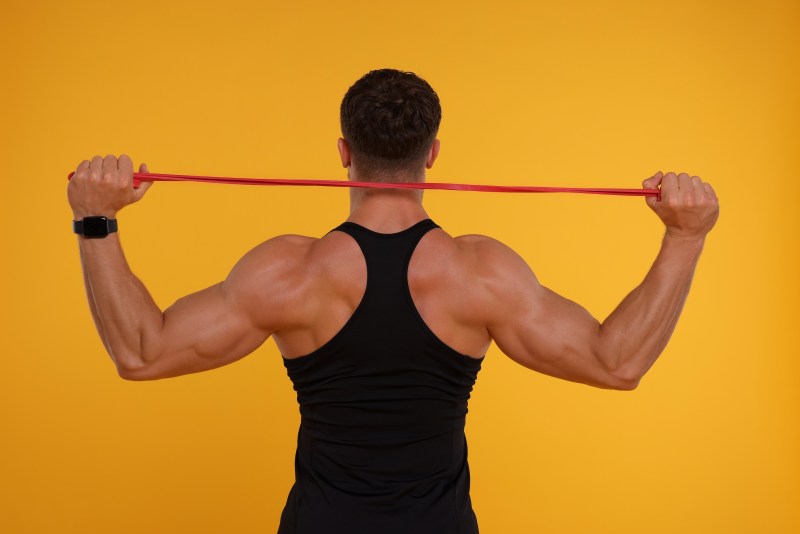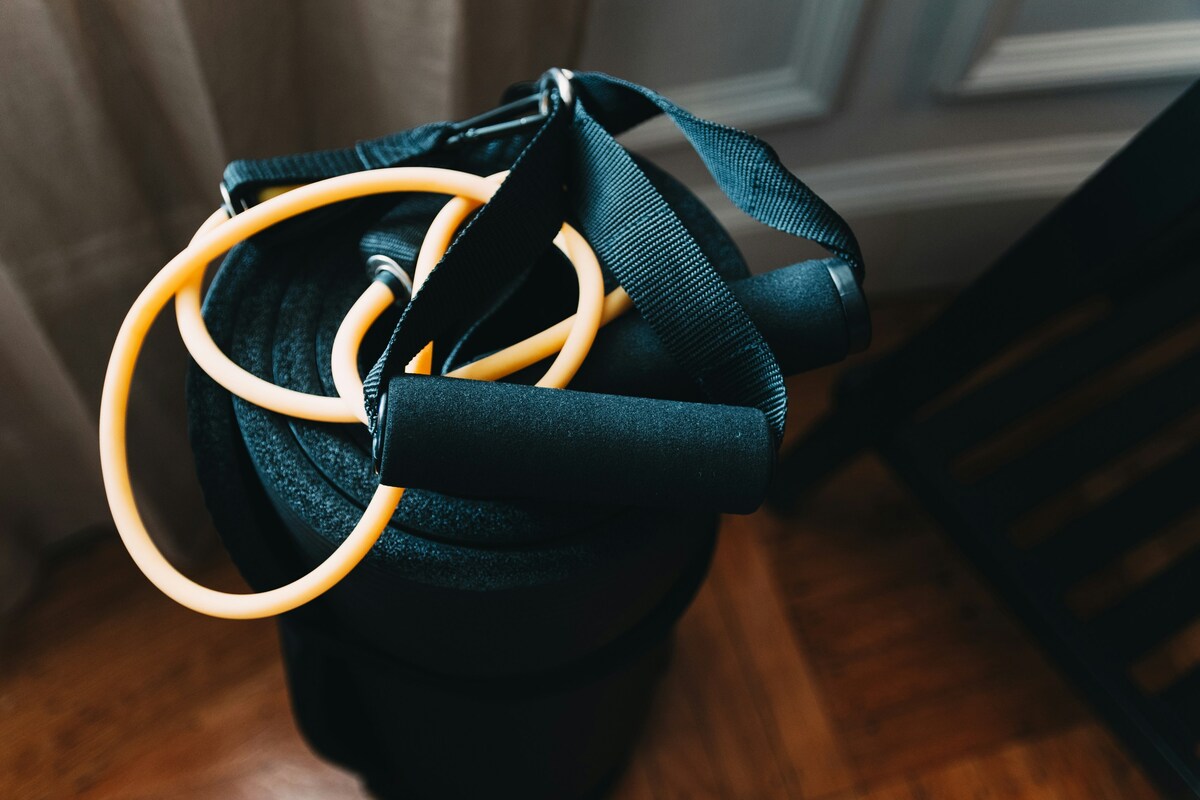
Resistance band back exercises are a versatile and effective way to strengthen your back muscles at home, at the gym, or even when traveling. With the convenience of resistance bands, you can perform a variety of exercises that target the different muscles in your back, promoting better posture, reducing the risk of injury, and improving overall strength.
Whether you’re a fitness enthusiast or just starting out, incorporating resistance band back exercises into your routine can lead to significant improvements in muscle tone and endurance.
Can I train back with resistance bands?

Absolutely! Resistance bands provide a unique challenge for back training due to their progressive resistance, meaning the further you stretch them, the more challenging the exercise becomes. This allows for a full range of motion and constant tension on the back muscles, which is essential for building strength and muscle mass. Training your back with resistance bands is not only effective but also convenient, as bands are lightweight, portable, and can be used anywhere.
5 exercises to build back muscle

Reverse flys
Reverse flys are one of the best back exercises to target the upper back and shoulders. In fact, using resistance bands can make this exercise even more challenging than dumbbells! This resistance band workout engages the posterior deltoids, rhomboids, and trapezius muscles, which help maintain proper posture and shoulder health.
Instructions:
- Stand with feet shoulder-width apart and on the center of a resistance band.
- Grip a handle in each hand, palms facing each other. Hinge forward slightly at your hips and keep your back straight.
- Keeping your elbows slightly bent, pull the band outward and back, squeezing your shoulder blades together.
- Slowly return to the starting position and repeat for three sets of 10 to 15 reps.
Single-arm bent-over rows
Single-arm bent-over rows are known for their efficiency in isolating the latissimus dorsi. By performing this back exercise, you not only enhance unilateral strength but also contribute to balanced muscle development. It’s a versatile addition to your resistance band exercises to build a resilient and powerful back.
Instructions:
- Step on a band with your right foot and hold the other end with the band in your left hand.
- Lean forward, keep your back straight, and let your arm hang down fully extended. Place your left hand on your left quad for support.
- Bend your elbow and pull the band up and back until your hand is by your hip, making sure your elbow stays close to your body.
- Lower back down with control, and repeat for three sets of eight to 10 reps per side.
Lat pulldowns
Lat pulldowns are an important contributor to the best back workouts, especially with resistance bands. This exercise mainly targets the latissimus dorsi, the broadest muscle of the back, creating a V-shaped torso. Regularly practicing lat pulldowns can significantly improve your upper body strength and are a must-have in your resistance band back exercises routine.
Instructions:
- Secure the center of the band overhead and kneel down, grabbing a handle in each hand. Your arms should be fully extended and form a V.
- Maintain a straight back and keep your chest up. Pull the handles down toward either side of your chest, keeping your elbows pointed down.
- Pause here for a moment before slowly releasing the handles back up and repeating for three sets of 10 to 12 reps.
Standing rows
Standing rows are a cornerstone exercise in resistance band workouts, designed to fortify the entire back. This movement not only hits the middle and lower traps but also engages the lats, making it one of the best back exercises for developing core stability and pulling strength. Add standing rows to your repertoire of resistance band exercises for a comprehensive back workout.
Instructions:
- Anchor a band right below chest height, and grab a handle in each hand. Your arms should be fully extended in front of you.
- Bend your knees slightly and stabilize your core.
- Pull the band handles towards your waist, squeezing your shoulder blades and keeping your elbows tucked into your sides.
- Release with control and repeat for three sets of 12 to 15 reps
Face pulls
Face pulls are a classic exercise that targets the often-neglected rear deltoids and upper back muscles. They ensure a balanced strength in your shoulders and back and promote better posture and shoulder integrity. Face pulls are an essential part of your workout that can help you get a stronger and better-defined upper back.
Instructions:
- Anchor a band at chest height and grasp the ends with both hands, palms facing down.
- Pull the handles toward either side of your face, keeping your elbows elevated.
- Squeeze the shoulder blades together, hold for a moment, and then release.
- Return to the starting position and repeat for three sets of 10 to 15 reps.
How do you lose back fat with resistance bands?

Unfortunately, you cannot target back fat or fat anywhere else on the body. However, making efforts to burn calories overall will eventually result in lessened back fat. You need a combination of resistance training, cardiovascular exercise, and a calorie-deficit diet to lose fat.
Resistance band exercises like the ones listed above are resistance training, which can help tone the back muscles. You can include other exercises like running, biking, and rowing to burn additional calories and body fat.
How do you warm up your back with resistance bands?

Warming up has been shown to increase performance and reduce the risk of injuries. Stretching with a resistance band can help you prepare your body with motions such as band pull-aparts, shoulder dislocates, and gentle rows. These movements help increase blood flow to the back muscles and prepare them for more intense exercise.



